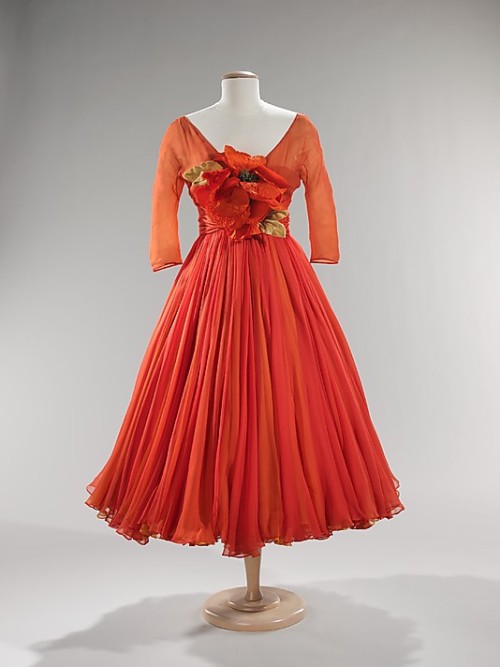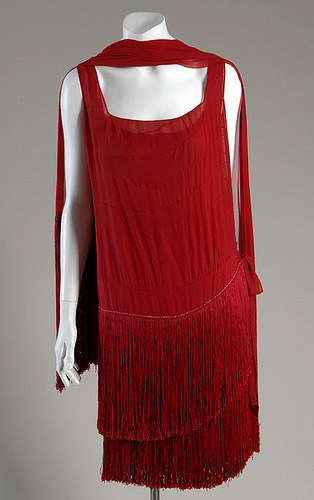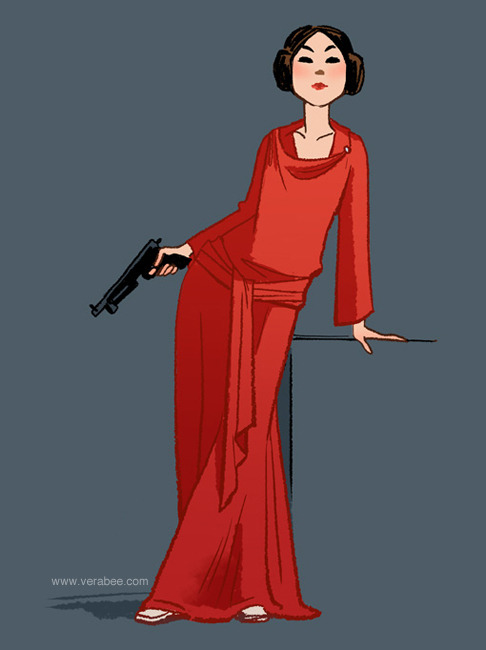
Today I had the sleeves of my T-shirt pulled up to just below my elbow as I was reading the paper, and when I happened to glance at them I quite liked the effect. I bought this top five or more years ago and sewed the lace around the collar and cuffs in 2010 as part of
a costume for a party where we had to come dressed as our favourite kids' book character. I went as
Burglar Betty from
Alan and Janet Ahlberg's
Burglar Bill:

…but at the time I couldn't find my copy of the book, and there were
no images online of Burglar Betty, so I went by memory and ended up getting the colour of her top wrong, along with the fact it had plain cuffs, not lace. I didn't even wear a hat because I couldn't remember what it looked like.

The lace was just hurriedly tacked on for the party with the intention of unpicking it afterwards, but in the end I couldn't be bothered and it survived the wash anyway, so here it remains. The lace is not stretchy, so in order to still be able to push up my sleeves, I sewed the lace onto the cuffs at full stretch. Here's what they look like at my wrists:

The top is one of those cheaply made Asian imports and while the body and the upper arms are very tight on me, the sleeves are actually too long for me, even before I added the lace, and aren't tapered in the lower arm, so they're quite baggy. This is why I often push them up.
What struck me at the time was how gestural a three-quarter sleeve can make the forearm and hand look.

I'm not especially proud of my forearms or hands, but I like the way they look in this sleeve. It reminds me of the graceful look captured in 18th-century portraiture:
 Queen Charlotte
Queen Charlotte, by Thomas Gainsborough, 1781. Along with a portrait of Charlotte's husband George III, this hung in the royal dining room and was widely copied, coming to represent the 'official' royal portrait of the Georgian era. I love her graceful arms emerging from the lace sleeves.

Miss Susanna Gale, by Joshua Reynolds, c1763-64. This portrait is owned by the National Gallery of Victoria and is my favourite work in the gallery. I love Susanna's alert expression and the richness of her gown. She was the daughter of a colonial plantation owner and these paintings were commonly commissioned when the sitter went to study in England.
18th-century dresses seem designed to show off the forearm. They were closely fitted through the upper arm, and then cut shorter on the inner forearm while the sleeve continued over the elbow. The forearm emerged in a simple, elegant line, framed by the elaborate puffs of lace, ribbons, trim and ruching continuing past the elbow over the outer arm.

The best way to observe this effect is in portraits, as many museum garments are displayed on armless mannequins. This is a detail from
The Marquise d'Aigurandes by François-Hubert Drouais, 1759.
Fashion Is My Muse explains further how fashions in ruffled lace sleeves changed over the course of the century.
But I am more interested in the exposure of the forearm, because historically Western women's forearms have not been eroticised – although in Japan, their judicious display is part of the geisha's art. Today, men's forearms have become sexy. There's a photo gallery of
15 "super sexy" male celebs, some of whom aren't revealing more than a couple of inches' worth.
One fan of musician
Raul Malo enthuses about how on stage, he rolls his sleeves up between songs:
Love long sleeve shirts with the sleeves rolled up just about two or three turns […] I'm not sure I can explain what it is that makes a sexy forearm but it has to do with the amount of hair on the arm, the tan, the musculature of the forearm, a refined wrist....not too thin, not too pale not too much hair or too little hair.
Documentary series
The Desire Project has an episode devoted to women's appreciation of male forearms. In the commentary of
this blog post about the project, user @ilikemints says, in part:
[My boyfriend] got really confused. He had never heard of the male forearm as a sexy body part before, or what made a forearm sexy. I had to do an image search to show him, explain why that was a big part of why dudes in bands tend to get ladies even if they're ugly (he has been in bands for almost 15 years!), because playing guitars and drums get dudes' forearms ripped. He knew that women like guys' bodies, but had never really thought deeply about individual male physical attributes that had merit or were valued in any specific way, other than general "that dude's really muscular, most girls want that"…
Perhaps it's in the name of gender contrast that popular culture does not encourage female forearms to be either muscular or slim. They are one of the few parts of the female body that can be plump. Instead, we tend to concentrate our arm-related shaming and resculpting on the fleshy upper arm. Remember the absurd mania over
Michelle Obama's arms?
"You can cover up legs and bottoms, but many women lament their flabby 'tuckshop lady arms' or 'batwings' because they're often bared to the world," says fitness trainer
James Menage in
Woman's Day magazine, which alleges "flabby arm syndrome is on the rise." Meanwhile at
Mamamia, women bemoan the difficulty of finding
summer clothing with sleeves.
Some in the plus-size fashion community knowingly suggest that plus-size clothes are sleeveless so that shoppers will be coerced into buying shawls, boleros and short-sleeved cardigans as additional summer items. Those with an
edgier, more activist bent argue that shoppers
should not capitulate to pressure to disguise 'unflattering' aspects of their bodies. Plus-size fashion retailer
Dream Diva includes in its
manifesto:
In summer a plus size girl wants to enjoy the warmth of the sun on her skin just as much as anyone else. Strappy and sleeveless tops and short skirts and sundresses are what she wants to wear.
Sure you hear some plus size women saying that they want to cover up their upper arms and that they prefer to wear dark colours because they create an illusion of a smaller body shape. But these plus sizes are the exception to the rule.
The "now" plus size girl is not afraid to show off her curves and is proud of who she is and is happy in her own skin.
Conversely, flaunting very muscular or thin arms is another kind of wardrobe malfunction. Last year I wrote in detail about UK tabloid
The Daily Mail's
war on sinew, which targets celebrities including
Madonna,
Sarah Jessica Parker,
Renee Zellweger,
Angelina Jolie and
Courteney Cox. The raw disgust in the language the paper uses is quite extraordinary, as well as its dismay that these women continue to go out in public showing their sinewy arms to the world.




























